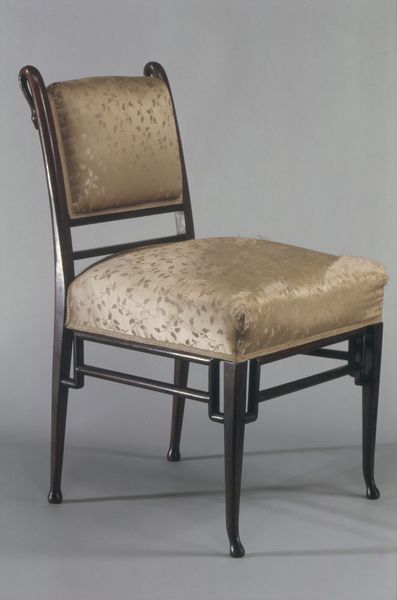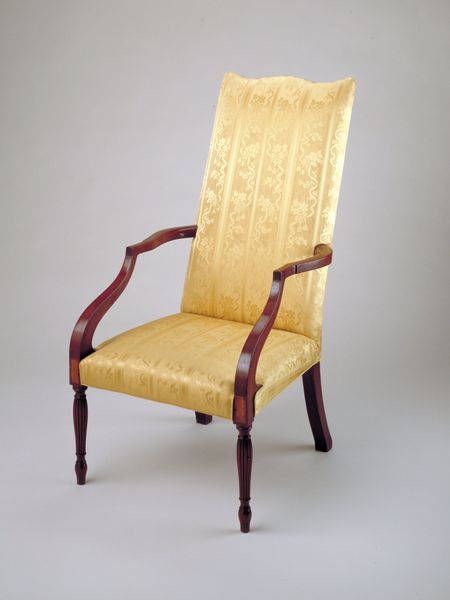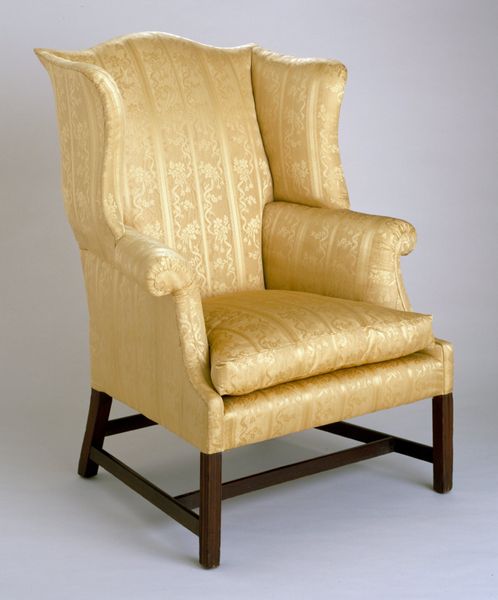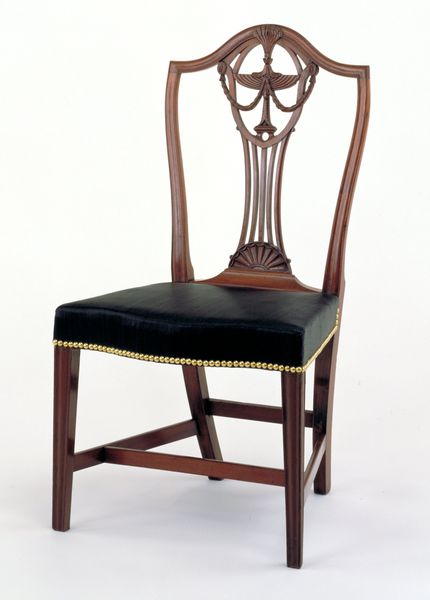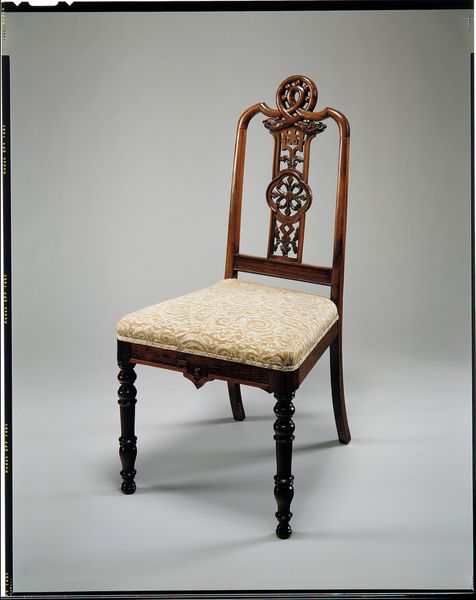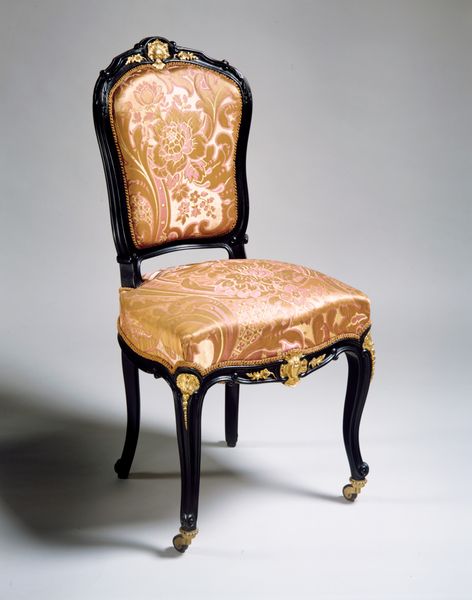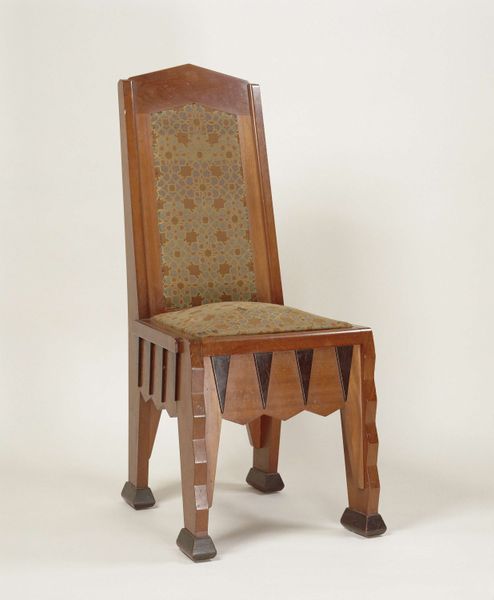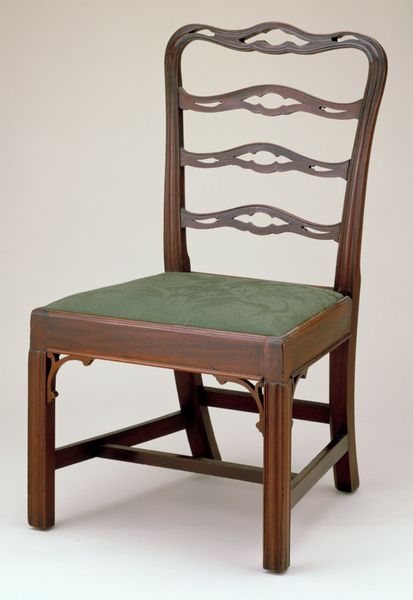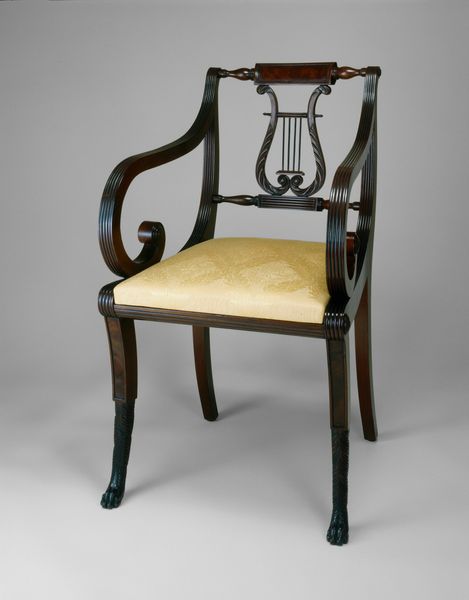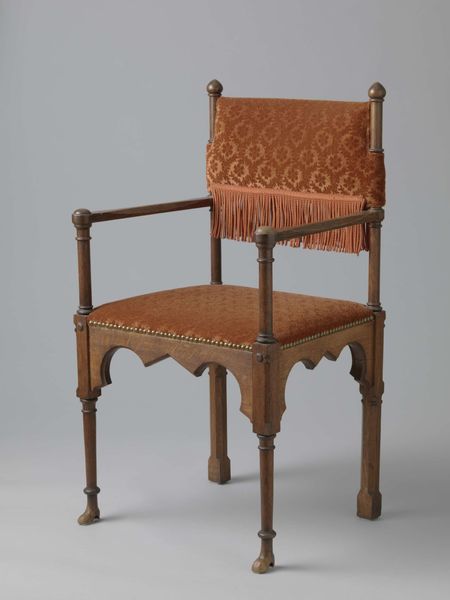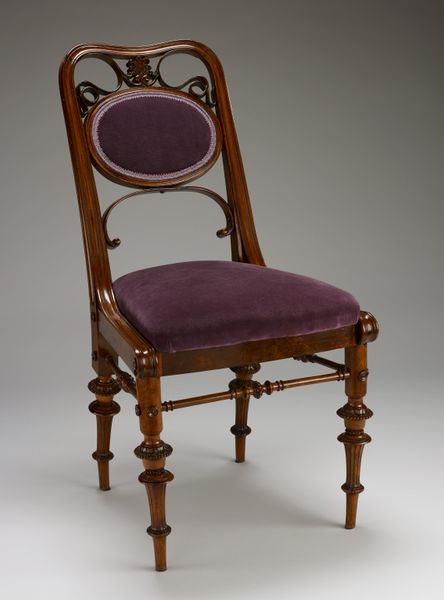
wood
#
portrait
#
furniture
#
united-states
#
wood
#
decorative-art
Dimensions: 37 x 20 1/2 x 21 in. (94 x 52.1 x 53.3 cm)
Copyright: Public Domain
Editor: So, here we have a “Side Chair,” made of wood sometime between 1875 and 1878 by George Jakob Hunzinger. It’s currently at the Metropolitan Museum of Art. I’m struck by how it seems both sturdy and strangely ornamental… almost a throne in miniature. What catches your eye? Curator: The chair presents a fascinating blend of functionality and symbolism, doesn’t it? Notice the strong, geometric frame contrasting with the soft, tufted upholstery. Think of chairs through time—they aren't just for sitting; they denote status, authority. How do the chair's contrasting elements make you feel? Editor: I think the combination is odd, to be honest. Like it wants to be comfortable, but also intimidating. Curator: Exactly! That tension reveals the complexities of the era. The late 19th century saw a rise in industrial production, but also a deep nostalgia for craftsmanship and tradition. The chair reflects that cultural push-and-pull. Look at the finials atop the back posts – don’t they resemble stylized animal heads? Those hark back to ancient Egyptian or Assyrian motifs, lending an air of timeless authority. Does knowing that shift your perception at all? Editor: I see that now! I was focused on the seat cushion and somehow didn’t notice them, but I suppose they add another layer, a nod to distant, powerful cultures. Curator: Indeed. And that upholstery speaks to the rising comfort and consumerism of the period, a desire for domestic luxury. The chair becomes a miniature stage on which these cultural forces play out. So what would it mean to "sit" in the time period's imagination? Editor: That’s a great point. I never really thought about furniture holding so many conflicting ideas at once. It gives me a lot to think about! Curator: Me too! There are stories held within everything, if we just pay close attention and try to understand their language.
Comments
No comments
Be the first to comment and join the conversation on the ultimate creative platform.
